
- •Quick Quiz 1
- •Quick Quiz 2
- •Quick Quiz 3
- •Quick Quiz 4
- •Course of lectures «Contemporary Physics: Part2»
- •The Lorentz Transformation Equations
- •The Lorentz Transformation Equations
- •The Lorentz Transformation Equations
- •The Lorentz Velocity Transformation Equations
- •The Lorentz Velocity Transformation Equations
- •Relativistic Linear Momentum and
- •Relativistic Linear Momentum and
- •Relativistic Linear Momentum and
- •Relativistic Linear Momentum and
- •Relativistic Energy
- •Relativistic Energy
- •Relativistic Energy
- •Relativistic Energy
- •Relativistic Energy
- •Relativistic Energy
- •Relativistic Energy
- •Mass and Energy
- •The General Theory of Relativity
- •The General Theory of Relativity
- •The General Theory of Relativity
- •The General Theory of Relativity
- •The General Theory of Relativity
- •The General Theory of Relativity
- •The General Theory of Relativity
- •Quick Quiz 1

Relativistic Linear Momentum and
the Relativistic Form of Newton’s Laws
We have seen that in order to describe properly the motion of particles within the framework of the special theory of relativity, we must replace the Galilean transformation equations by the Lorentz transformation equations. Because the laws of physics must remain unchanged under the Lorentz transformation, we must generalize Newton’s laws and the definitions of linear momentum and energy to conform to the Lorentz transformation equations and the principle of relativity. These generalized definitions should reduce to the classical (nonrelativistic) definitions for

Relativistic Linear Momentum and
the Relativistic Form of Newton’s Laws
First, recall that the law of conservation of linear momentum states that when two particles (or objects that can be modeled as particles) collide, the total momentum of the isolated system of the two particles remains constant. Suppose that we observe this collision in a reference frame S and confirm that the momentum of the system is conserved. Now imagine that the momenta of the particles are measured by an observer in a second reference frame S" moving with velocity v relative to the first frame. Using the Lorentz velocity transformation equation and the classical definition of linear momentum, p = mu (where u is the velocity of a particle), we find that linear momentum is not measured to be conserved by the observer in S’. However, because the laws of physics are the same in all inertial frames, linear momentum of the system must be conserved in all frames. We have a contradiction.

Relativistic Linear Momentum and
the Relativistic Form of Newton’s Laws
In view of this contradiction and assuming that the Lorentz velocity transformation equation is correct, we must modify the definition of linear momentum to satisfy the following conditions:
•The linear momentum of an isolated system must be conserved in all collisions.
•The relativistic value calculated for the linear momentum p of a particle must approach the classical value mu as u approaches zero.
For any particle, the correct relativistic equation for linear momentum that satisfies these conditions is
where u is the velocity of the particle and m is the mass of the particle. When u is much less than c, 
approaches unity and p approaches mu.
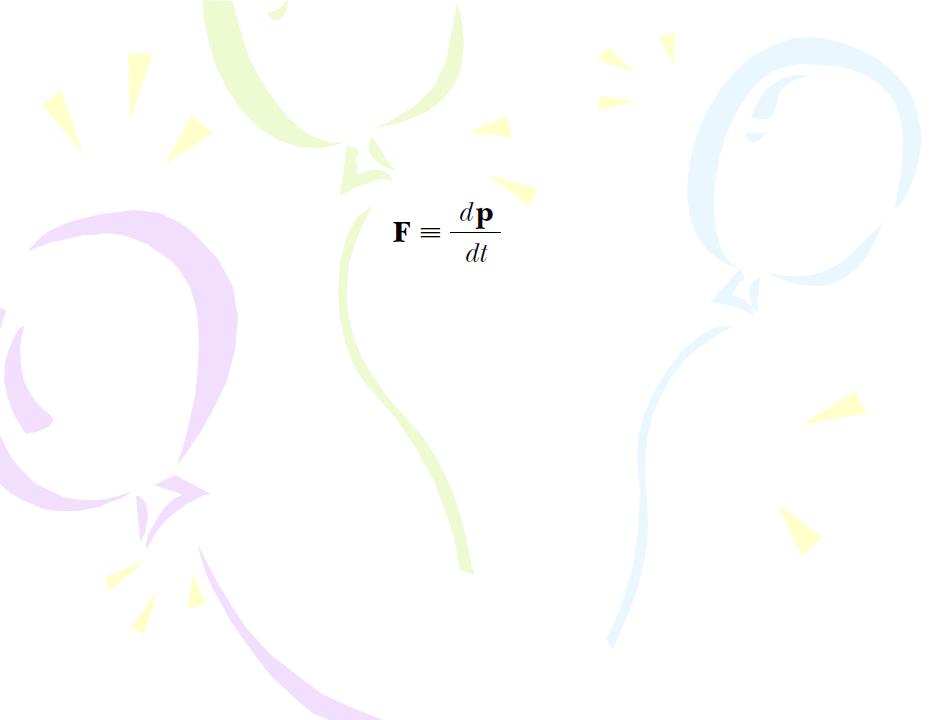
Relativistic Linear Momentum and
the Relativistic Form of Newton’s Laws
The relativistic force F acting on a particle whose linear momentum is p is defined as
This expression, which is the relativistic form of Newton’s second law, is reasonable because it preserves classical mechanics in the limit of low velocities and is consistent with conservation of linear momentum for an isolated system (F=0) both relativistically and classically. 
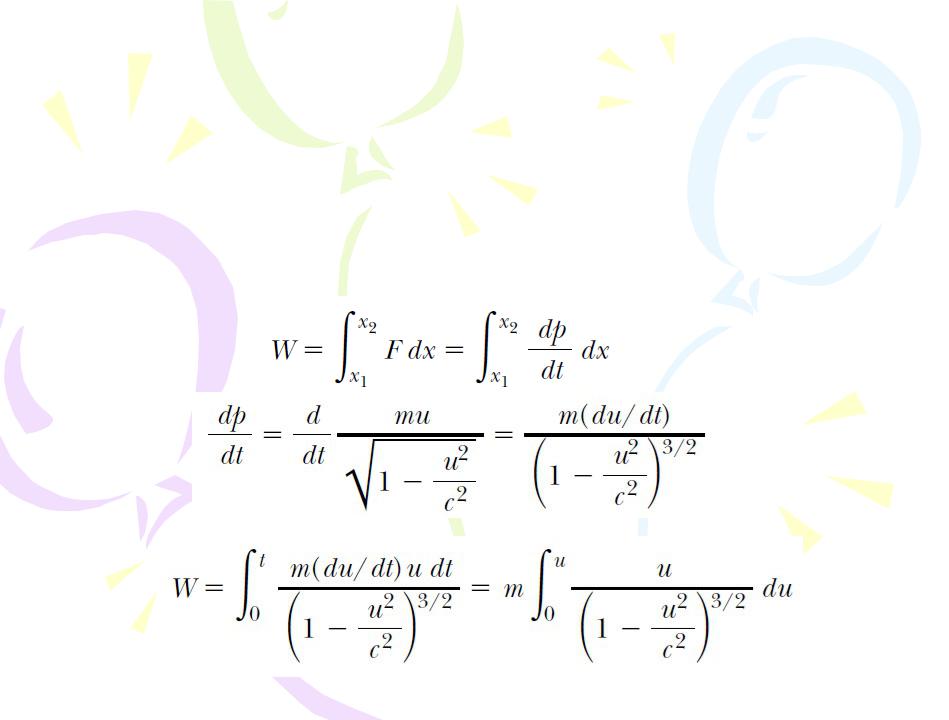
Relativistic Energy
We have seen that the definition of linear momentum requires generalization to make it compatible with Einstein’s postulates. This implies that most likely the definition of kinetic energy must also be modified. To derive the relativistic form of the work–kinetic energy theorem, let us imagine a particle moving in one dimension along the x axis. The work done by the force F on the particle is
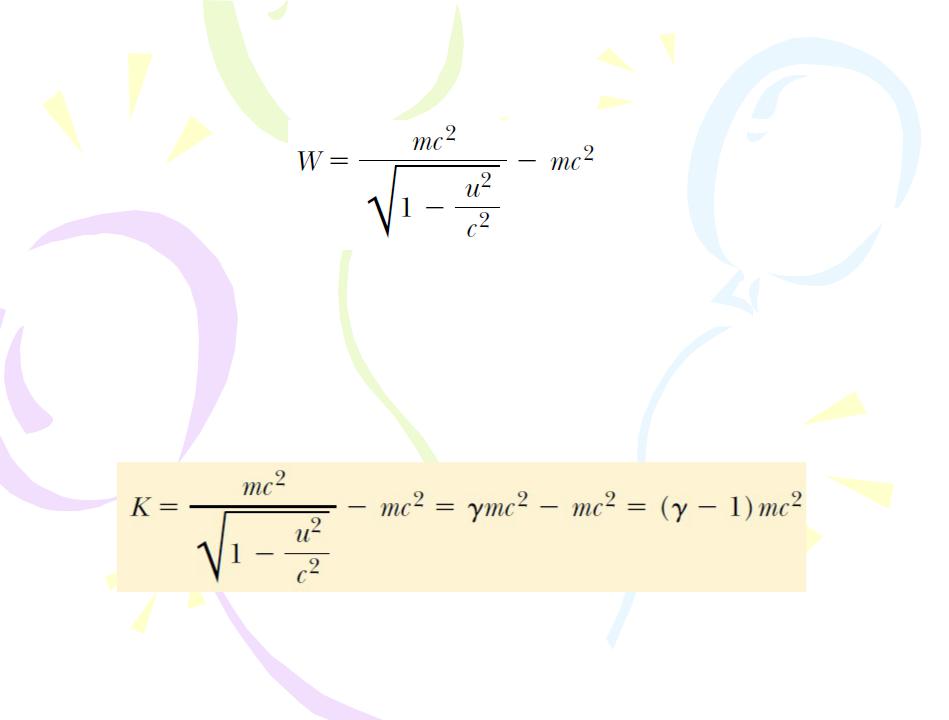
Relativistic Energy
Evaluating the integral, we find that
the work done by a force acting on a system consisting of a single particle equals the change in kinetic energy of the particle. Because we assumed that the initial speed of the particle is zero, we know that its initial kinetic energy is zero. We therefore conclude that the work W is equivalent to the relativistic kinetic energy K:
This equation is routinely confirmed by experiments using high-energy particle accelerators.
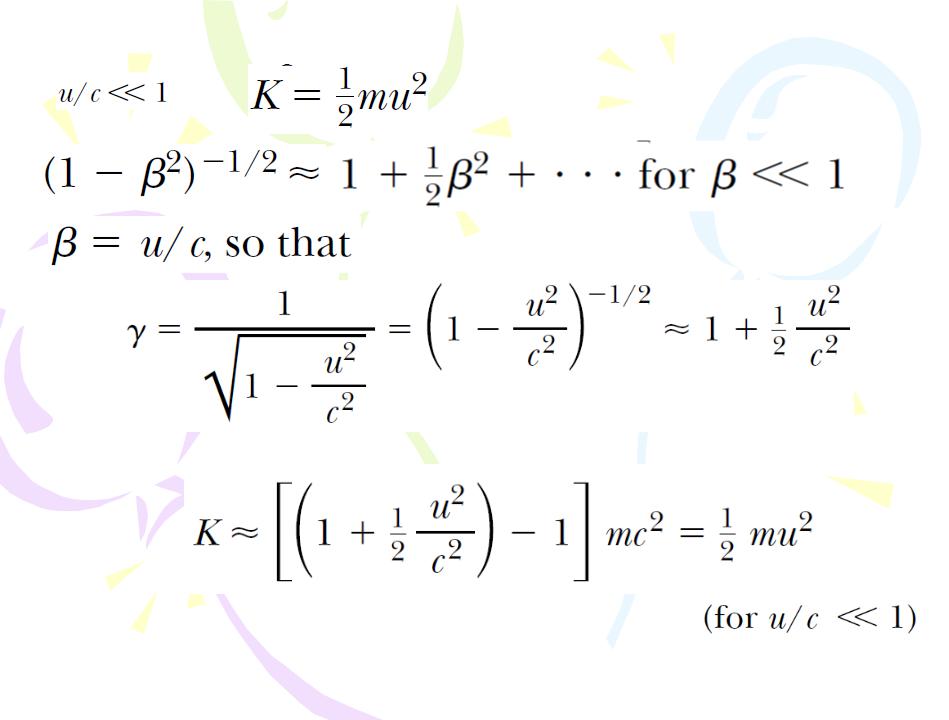
Relativistic Energy
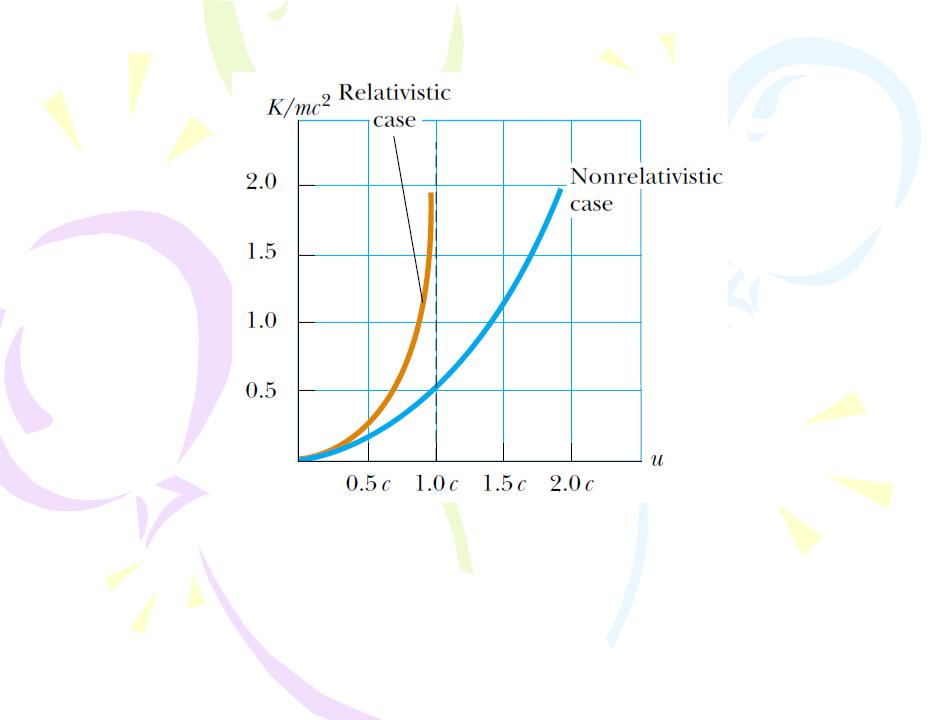
Relativistic Energy
A graph comparing relativistic and nonrelativistic kinetic energy of a moving particle. The energies are plotted as a function of particle speed u. In the relativistic case, u is always less than c.
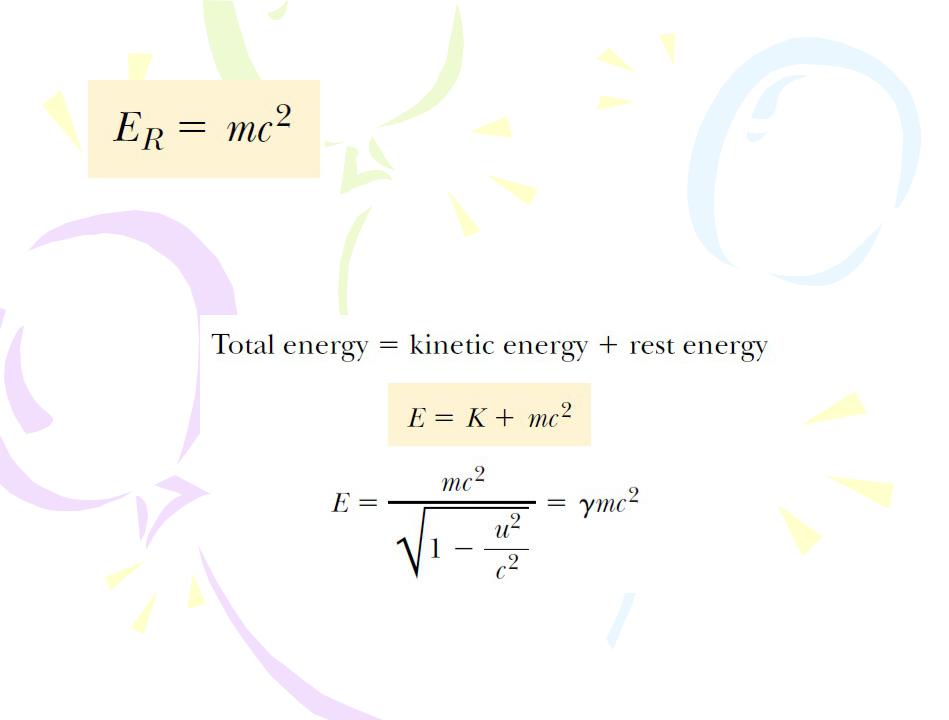
Relativistic Energy
the rest energy ER of the particle
The term γmc2, which does depend on the particle speed, is therefore the sum of the kinetic and rest energies. We define γmc2 to be the total energy E: 
This expression shows that a small mass corresponds to an enormous amount of energy, a concept fundamental to nuclear and elementary-particle physics.
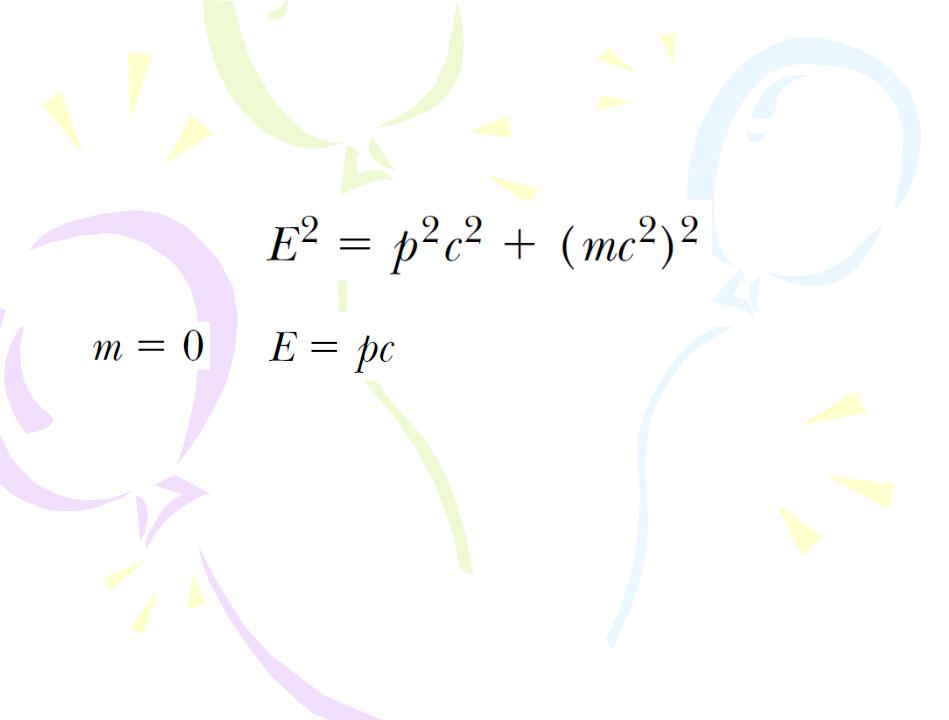
Relativistic Energy
In many situations, the linear momentum or energy of a particle is measured rather than its speed. It is therefore useful to have an expression relating the total energy E to the relativistic linear momentum p. 
Finally, note that because the mass m of a particle is independent of its motion, m must have the same value in all reference frames. For this reason, m is often called the invariant mass. On the other hand, because the total energy and linear momentum of a particle both depend on velocity, these quantities depend on the reference frame in which they are measured.
